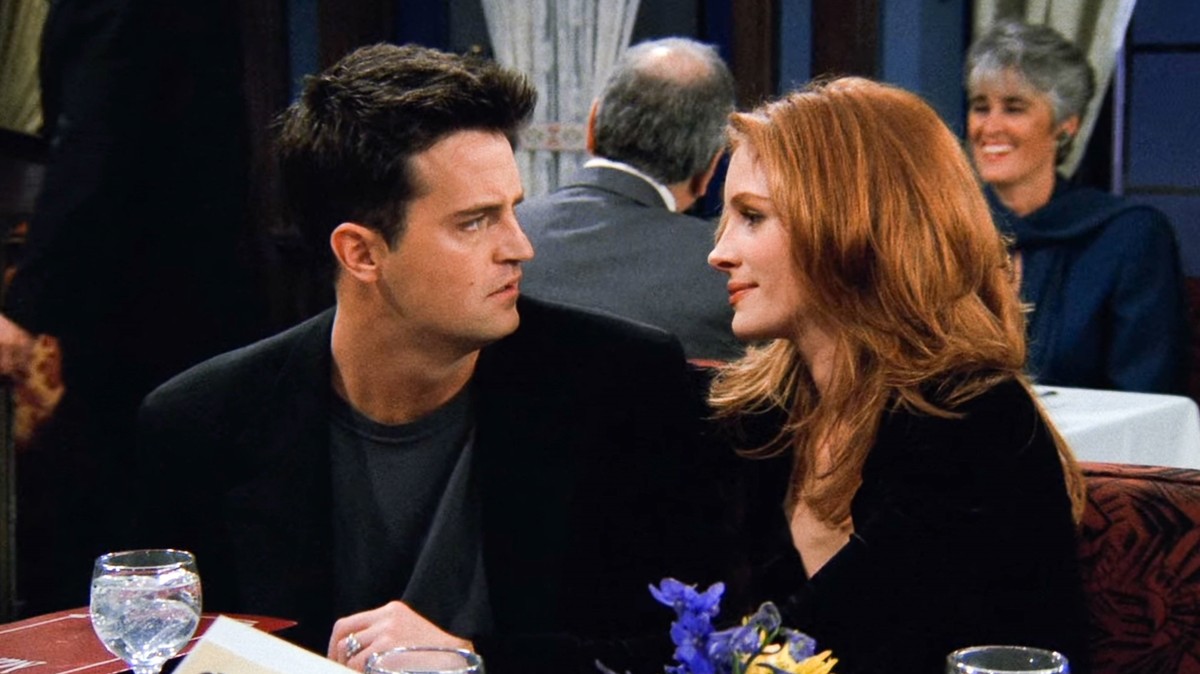In 2013, moviegoers were treated to a film adaptation of the Pulitzer Prize-winning play August: Osage County, bringing together a powerhouse cast that included Meryl Streep, Julia Roberts, Benedict Cumberbatch, and several other celebrated actors. The film garnered immediate attention not just for its star-studded lineup but also for the striking transformations the actors underwent to portray complex, often beleaguered characters grappling with family tensions in rural Oklahoma. In particular, Julia Roberts, best known for her radiant smile and iconic leading-lady roles, took on the part of Barbara Weston—a character who required a drastically different aesthetic than the polished looks audiences were accustomed to seeing on the red carpet.
This article explores how Roberts, along with other cast members, temporarily shed the glamour and glitz of Hollywood to embody a family caught in the throes of drama and tension. It delves into the significance of the costumes and minimal makeup, the behind-the-scenes camaraderie, and the role of authenticity in bringing August: Osage County to life.
Stepping Away From the Red Carpet Image
Julia Roberts spent years solidifying her status as one of Hollywood’s sweethearts, known for roles such as Vivian Ward in Pretty Woman, Anna Scott in Notting Hill, and Erin Brockovich in the eponymous film. In each of these performances, she displayed a recognizable warmth, a magnetic grin, and a sense of sophistication that endeared her to millions worldwide. Yet, when it came time to portray Barbara Weston, Roberts set aside her trademark glamour to fully inhabit the character.
On set in Bartlesville, Oklahoma, Roberts could be seen sporting layered tops, jeans, and a look some might label “dowdy” compared to her usual designer ensembles. Instead of flowing tresses styled by Hollywood’s top hairstylists, she wore her hair in simpler, more utilitarian styles, reflecting a stressed wife and mother grappling with serious family issues.
While observers might have been startled to witness her in such a stripped-down persona, this approach was consistent with the film’s overarching atmosphere—a narrative that revolves around grief, familial confrontation, and deep-seated resentment. Going for a “natural” or even somber aesthetic allowed Roberts to channel Barbara’s emotional burden and daily struggles more convincingly.

Diving Into the Role of Barbara Weston
Barbara Weston is one of August: Osage County’s core figures—a daughter who finds herself reluctantly returning to her childhood home following a significant family crisis. The film’s storyline pivots around Violet Weston, Barbara’s mother, played by Meryl Streep. Violet is battling both emotional and physical ailments and does little to shield her daughters from her caustic remarks or manipulative tendencies.
Within this tense family dynamic, Barbara strives to assert her independence and keep a semblance of control as relationships unravel around her. Translating that tension to the big screen required a departure from overt glamorization. Roberts needed to convey frustration, exhaustion, and heartbreak, all of which manifested not only in her performance but also in the subtlety of her appearance—like wearing jeans and layering comfortable, often dull-colored tops. This costume design approach underscored the reality of a character who is there not to impress but to manage chaos.
The Costumes: Layered Tops and Flared Trousers
Reports from the set detail how other actors also donned uncharacteristic ensembles, aiming for a sense of rural realism. One example included a co-star from Boardwalk Empire (the article mentions a “Boardwalk Empire star,” though not by name) who wore a simple blue shirt and brown flared trousers, with her hair in a plain ponytail.
This emphasis on less polished wardrobe choices was a deliberate decision by the costume department. August: Osage County unfolds in a part of rural Oklahoma where practicality outranks fashion statements. Characters are worried about paying bills, dealing with addiction, and exposing family secrets. Their wardrobes, therefore, reflect these day-to-day concerns, not the aspirational style one might see in a big city setting.
During shooting, Roberts’ day-to-day “uniform” might include oversized sweaters, relaxed denim, and minimal accessories. The simple hair and clothing captured Barbara’s emotional fatigue while providing a tangible sense of place—viewers could see the dusty roads and scorching heat in each fade of the fabric and each weary posture.

Minimal Makeup: A Deliberate Choice
Perhaps more astonishing to onlookers accustomed to Julia Roberts’ glossy magazine covers was the near-total absence of makeup. In on-set photos, her face appeared bare, revealing the faint lines and features not frequently displayed in glamorous photoshoots. This was not a casual decision but rather an essential step in reflecting the character’s emotional rawness.
Hollywood’s tradition of over-polishing actors can risk undermining the authenticity of a film, especially one so grounded in familial conflict and bleak emotional landscapes. By minimizing makeup, the filmmakers underscored the daily grind Barbara faces: caretaking for her aging mother, dealing with marital tension, and managing the heartache that accompanies adult responsibilities. Whether she was crying, shouting, or simply staring vacantly at the family home, Roberts’ unadorned face made those emotions all the more searing.
Chemistry Among the Cast: Humor and Camaraderie On Set
Even as the film itself revolves around turmoil, cast members occasionally found humor or gentle warmth in between takes. One anecdote mentioned in the original snippet references Julia Roberts and a group of co-stars sharing a funny moment together while working with Juliana Nicholson (credited as “Julianna Nicholson” in some sources). This lighter camaraderie contrasted the gravity of the storyline.
Benedict Cumberbatch, who portrayed “Little Charles Aiken,” was another noteworthy member of the ensemble. Cumberbatch’s presence symbolized a changing dynamic in the Weston family tree—a younger cousin whose insecurities and vulnerabilities come into play against the backdrop of the older generation’s battles. His interactions with Roberts both on and off camera reportedly added to the set’s lively energy.
Meryl Streep, a legend in her own right, likewise brought a potent mix of intensity and humor to the production. One of Hollywood’s most venerated actresses, Streep set a tone of professionalism that Roberts and the others could follow. While the group was all smiles at certain moments behind the scenes, they consistently dedicated themselves to portraying the raw conflicts the script demanded.

Casting Decisions and Near Misses
The film’s IMDb page mentions that certain notable actors were once considered for roles in August: Osage County. For instance, Renée Zellweger and Andrea Riseborough were apparently on the shortlist. Riseborough was reportedly cast but later withdrew due to scheduling conflicts. While such behind-the-scenes details might seem minor, they highlight how the production worked tirelessly to gather the perfect ensemble.
Filming an adaptation of a Pulitzer Prize-winning play, especially one so reliant on strong ensemble acting, necessitated that each character be portrayed with nuance. In the end, the final cast’s synergy allowed the film to garner both critical and public attention—even if some viewers found the relentless tension and angst a tough watch.
Emotional Scenes in Bartlesville, Oklahoma
Bartlesville, where much of the filming took place, provided the authenticity of a small-town Oklahoma atmosphere. Worn-down fields, quiet roads, and the oppressive summer heat created the backdrop for the Weston family’s disintegration. Julia Roberts and her colleagues leaned into these surroundings to mirror the claustrophobia and frustration their characters felt.
Witnesses on set described Roberts’ intense focus during highly charged scenes—her face set in grim determination while Barbara confronted her family’s demons. Moments of confrontation between Barbara and Violet remain among the film’s most memorable, blending raw confrontation with heartbreak. The location amplified that tension, as if the Oklahoma sunlight itself bore down on their every argument.
Reception of Roberts’ Performance
Upon the movie’s release, fans of Tracy Letts’ original play were eager to see if the screen adaptation would do justice to the story’s intensity. Critics had varied responses: some praised the cast’s performances—Julia Roberts and Meryl Streep in particular—for capturing the murky emotional depths that made the stage play a success. Others argued that the film adaptation lacked some of the nuance and intimacy of the theatrical experience.
Nevertheless, for Roberts, the role was both challenging and praised as one of her most striking departures from glamorous portrayals. She earned an Oscar nomination for Best Supporting Actress, a testament to her success in bringing Barbara’s complexity to life. Audiences saw a Julia Roberts unafraid to look tired, older, and weighed down by a mountain of personal burdens—an illustration of her range and willingness to embrace physically and emotionally demanding parts.
Looking Beyond the Dowdy Look
Though the bulk of the attention might have settled on Julia Roberts’ “dowdy” attire and minimal makeup, the essence of her portrayal runs far deeper. August: Osage County is about interconnected lives, grief, regret, and the faint glimmers of hope that may emerge even in dire circumstances. The plain clothing and stripped makeup were simply outward manifestations of those internal struggles.
When viewers see Barbara snapping at family members, crumpling under stress, or exchanging barbs with her manipulative mother, they witness a character at war with her own identity. She feels duty-bound to her family yet yearns to escape the toxicity. Roberts’ costume choices, hair styling, and emotional portrayal all mesh together to illustrate that crucial internal conflict.

Legacy of the Film and the Transformation
Although August: Osage County did not become a sweeping box-office juggernaut, it left an impression. For many fans, it was an opportunity to see an actress so synonymous with Hollywood glamour as an everywoman—frazzled, vulnerable, and unmistakably real. Critics may debate the film’s faithfulness to the original stage production or question aspects of the adaptation’s pacing, but there is near-universal agreement that the cast pushed themselves beyond their comfort zones to deliver raw and honest performances.
Years later, the images of a makeup-free Julia Roberts in a dusty Oklahoma backdrop remain emblematic of the film’s overall style—unvarnished yet deeply human. For Roberts, it signaled a willingness to keep evolving as an actress, reminding audiences that she could embody far more than the polished, romantic comedy leads that catapulted her to fame. As for viewers, it underscored the power of costume and setting in shaping how characters are understood, highlighting that “beauty” can sometimes lie in the authenticity and complexity of a performance rather than in the superficial allure of designer wardrobes and perfected lighting.
In sum, the filming of August: Osage County was not merely about adopting a drab look; it was about embracing the depth and grit of a family—and a woman—on the brink. Through her portrayal of Barbara Weston, Julia Roberts added another layer to her already storied career, proving once again that she could challenge both herself and the audience’s expectations in the pursuit of genuine storytelling.

